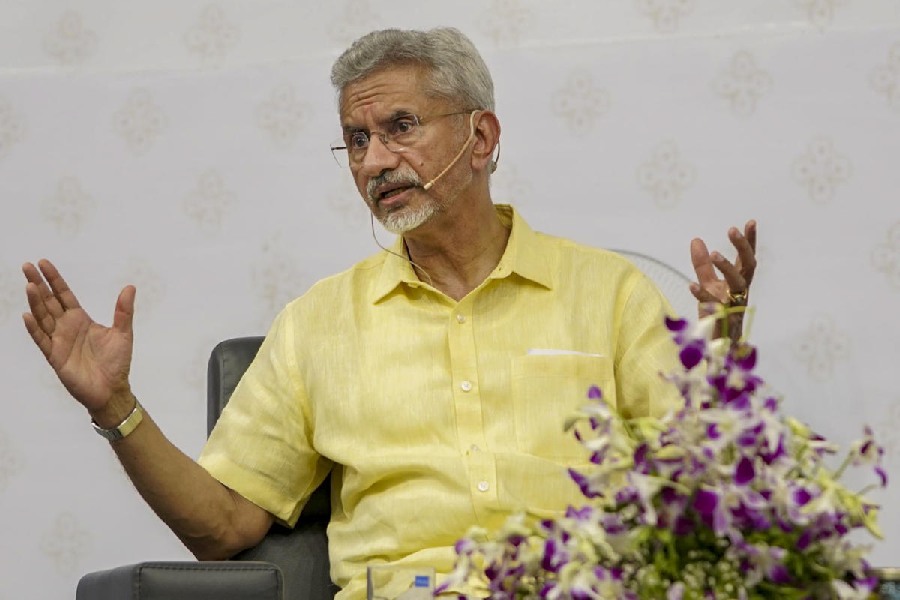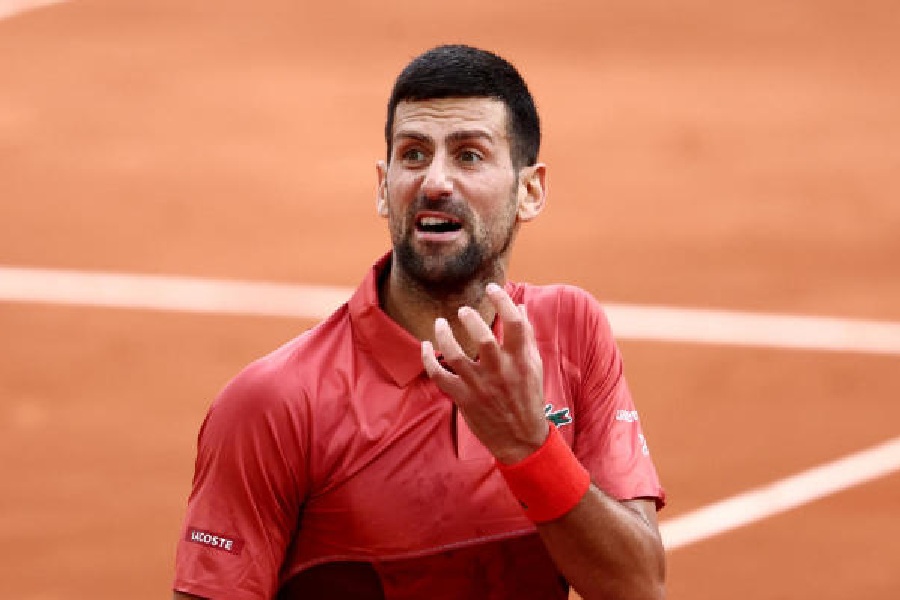|
|
| COST FOR A CURE: A file picture of an installation by British artist Damien Hirst. (AFP) |
In a corner of a dreary sexually transmitted disease clinic in suburban Mumbai, Ramkewal Yadav sits on a bench with his wife, waiting for his turn to see the doctor.
Ever since he was diagnosed with AIDS nearly eight years ago, Ramkewal, now in his 40s, has been coming to the clinic once every month. With proper medical attention and regular medication, the man says his health has improved.
Ramkewal, a scrap dealer from Bhandup, spends about Rs 1,800 a month on medicines, one-tenth of what AIDS drugs cost in the West. The Uttar Pradesh native takes cheap generic AIDS medicines produced by Indian pharmaceutical companies. Unlike an AIDS sufferer in the US, he hasn?t been required by law ? so far ? to buy the far more expensive patented drugs.
But this could change in the near future, depending, of course, on who wins the final battle in India over a patent law ? the influential pharmaceutical giants or a vociferous combine of non-governmental organisations, Left parties and local drug manufacturers.
Both sides have swung into action. In fact, just days after the Congress-led government issued an ordinance on December 26, amending the Indian Patent Act for the third time to meet requirements of the World Trade Organisation as a member country, people on two sides of the bill have been lobbying with the government for changes. It?s a now-or-never race for them, for the ordinance must be made into a law within six months of its issuance.
Neither side, though, is happy with the presidential decree. And they both want the government to tweak it ? to their satisfaction ? before it gets through Parliament.
?It?s a fraud on the nation, a betrayal of people,? Vandana Shiva, the director of the Delhi-based Research Foundation for Science, Technology and Ecology, says. Shiva is convinced that the amendment will ?crush? common people and ?kill? the indigenous drug industry.
Soon after the ordinance was issued, activists such as Shiva got together in Delhi and formed a committee with the help of Left trade unions. A non-cooperation movement against the government was announced on January 30, the day Mahatma Gandhi was assassinated, and protest rallies are being planned.
| ACT BY ACT |
| 1911 The British Patents and Designs Act allows product patents 1970 It is replaced with the Indian Patent Act which allows only process patent but no product patent 1999 The Act is first amended mainly to incorporate the exclusive marketing rights of a company that has a product patent elsewhere and to introduce the mailbox system to receive patent applications, to be processed from January 1, 2005 2002 The Act is amended again. Some 64 clauses are incorporated, mainly relating to patent terms, exceptions to exclusive rights et al 2004 The Act is amended for the third time in December 2004 through an ordinance, which, more than anything else, allows product patents. |
Even international groups such as Oxfam and Medecins Sans Frontieres (MSF) have jumped into the fray, albeit quietly. ?We spoke with senior government functionaries on the phone and tried to persuade them to make changes. We have kept up the effort,? Samar Verma, Delhi-based regional advisor to Oxfam, says.
The pharmaceutical giants are not sitting idle either. GlaxoSmithKline, one of the world?s biggest drug firms, threatened not to invest in India further unless the government closed the loopholes in the patent ordinance. It says it was disappointed with the country?s new patent regime, describing the proposed legislation as weak on several crucial counts.
The government, however, seems to be in no mood to appease either side. Union minister for commerce and industry Kamal Nath sidesteps the issue when asked if the government is open to changes. ?We are neither open, nor shut,? he says.
Clearly, the bill has made neither side happy. Health activists believe that the government is succumbing to MNC pressure, and the MNCs are convinced that the ordinance does little for them. ?We wanted a law, not an ordinance. We don?t know what direction the ordinance will now take,? says Homi Bhabha, the director of the Organisation of Pharmaceutical Producers of India (OPPI), which counts among its members most MNCs. The OPPI is believed to have begun lobbying with the government to bring about changes in the proposed law.
Curiously, both sides have a problem with the same clauses ? compulsory licensing, patentability of a product and the pre-grant opposition ? which they say have either been left vague or made complicated in the ordinance.
Under compulsory licensing, the government, for example, can allow a local generic company to make a patented drug if its price is too high and beyond the reach of most of the people. In that case, the generic company pays a royalty fixed by government to the patent holder.
But Gajanan Wakankar, executive director of the Indian Drug Manufacturers? Association, a body fighting largely for generic makers, believes that the government has made the procedures so complicated that it is almost going to be impossible for a generic company to get a licence.
On the other hand, the OPPI, too, wants a clear definition of compulsory licensing. President Ranjit Shahani, managing director of Novartis India Limited, says that copycat drug makers will otherwise use it to their advantage.
When it comes to patentability criteria, Wakankar expresses the fear that the clause could easily lead to ?evergreening? ? a term used when big pharmaceutical companies, seeking to maintain their monopoly in the market, use different molecules or processes to extend a patent. Normally, a patent expires after 20 years.
But Bhabha charges that Indian drug makers would use the vague patentability clause to block real patents by big pharmaceutical companies. ?Many big companies spend as much as $800 million to research and develop a drug. But now anybody could try and stall their bids to get patents of the products they developed,? he says.
A provision in the bill for voices of opposition has become equally controversial. The pre-grant opposition clause in a patent act allows people to raise objections when a company tries to pass off an innovation as an invention and claims its patent. The pre-grant opposition clause has been replaced with the phrase pre-grant representation.
The OPPI is unhappy about that. ?We are looking to a post-grant opposition regime as the pre-grant opposition system often delays the patent,? Shahani says.
But the IDMA and the activists accuse the government of diluting the provision. ?The power to protest which was in the earlier amendment has been taken away. Now you will have to beg them to listen to you,? Shiva says.
What?s upset the health experts most is that India did not make full use of the flexibilities provided under the Trade Related Aspects of Intellectual Property Rights or TRIPS, the WTO agreement that prompted India to amend the Patent law ? a fact stressed by the New York Times (NYT) in a scathing editorial on January 18. The ordinance, NYT says, was heavily influenced by multinational and Indian drug makers eager to sell patented medicines to the country?s huge middle class. ?The decree is so tilted towards the pharmaceutical industry that it does not even take advantage of rights countries enjoy under the WTO to protect public health,? the editorial laments.
As the Union commerce and industry ministry prepares to table the ordinance in Parliament in the last week of February to make it a law, a joint action committee of trade unions and mass organisations has threatened to launch a countrywide agitation on February 13. Besides holding a convention in Delhi on February 17, the committee will stage a ?march to Parliament? on February 26.
The Left parties, too, have vowed to fight the ordinance in and outside Parliament. ?This is against the interests of our people and we will agitate publicly against it,? Jyoti Basu, veteran CPI(M) leader and former chief minister of West Bengal, says. The CPI(M) has already called a public meeting at Calcutta?s Brigade Parade grounds on February 12 to protest the ordinance. ?The party will do what it takes to get the ordinance modified in Parliament,? Nilotpal Basu, the CPI(M) Rajya Sabha MP, says.
The proposed legislation seeks to overturn an ordinance issued by Indira Gandhi nearly 35 years ago. The growth of the Indian pharmaceutical industry began in 1972 after Gandhi, then Prime Minister, passed the Indian Patent Act, abolishing the British Patents and Designs Act of 1911.
?It?s a supreme irony,? N.H. Israni, chairman and managing director of Blue Cross Laboratory, says. ?The present ordinance seems more akin to the British Act Indira Gandhi had abolished.?
According to Sudip Chaudhuri, an economics professor at the Indian Institute of Management in Calcutta, the most striking feature of Gandhi?s legislation was that it did not recognise product patent protection in drugs and food ? unlike the British Act. The 1970 Patent Act allowed only process patent of a drug. It meant that while nobody could duplicate and sell a patented drug, any manufacturer who used a different process to make the same drug could do so.
?The Indian pharmaceutical industry thrived on this legislation, making drugs using a different process than the one used by the patent holder,? says Chaudhuri, author of a forthcoming book on the subject. In the process, he says India not only became self-reliant in drugs, but also emerged as a major pharmaceutical player in the world.
The 2004 ordinance recognises product patents ?which has been a long-standing demand of the pharmaceutical giants who spend millions on research and development of drugs. Most agree that the Manmohan Singh government had little choice in the matter, for it had to have a law in place before the expiry of the January 1, 2005, deadline set by the WTO.
But what galls the activists is that the India government went much beyond what it was required to do under the WTO agreement. Since the 1970 Act had been amended twice, all that the Union government needed to do was introduce two clauses, abolishing the exclusive marketing rights ? which was a 1995 WTO condition that was in place till India framed its new patent law ? and introducing patent protection.
?But instead, the bill actually included 70 other clauses, which were not necessary under TRIPS. These were introduced to simplify the patent grant procedures so as to make it easier for the MNCs to get product patents,? Chaudhuri holds.
Kamal Nath denies his ministry acted under MNC pressure. ?The amendment will protect the patents of the Indian drug industry as well,? he told The Telegraph. ?It?s a law for tomorrow, not for yesterday.?
Given the situation, even the Federation of Indian Chambers of Commerce and Industries is treading carefully, trying to strike a balance between the conflicting demands. While congratulating the government for the ordinance, Amit Mitra, secretary general of FICCI, says the government must ensure that there is no evergreening, a demand of the generics manufacturers. At the same time, Mitra says the government must ensure data protection, a major demand of the pharma giants who want to protect their sensitive data from generics makers.
?This legislation will become counter-productive if the government does not take care of these two issues,? Mitra says.
Ramkewal Yadav, the AIDS patient, has not heard of the ordinance. Nor does he have any idea what it means to him as he waits at Dr Gilada?s clinic in Mumbai. But he knows what he will do if the prices of his medicines balloon tomorrow. ?I will simply stop taking them,? he says. ?What can you do if God doesn?t want you to live??
God, or an ordinance ? call it what you will.











